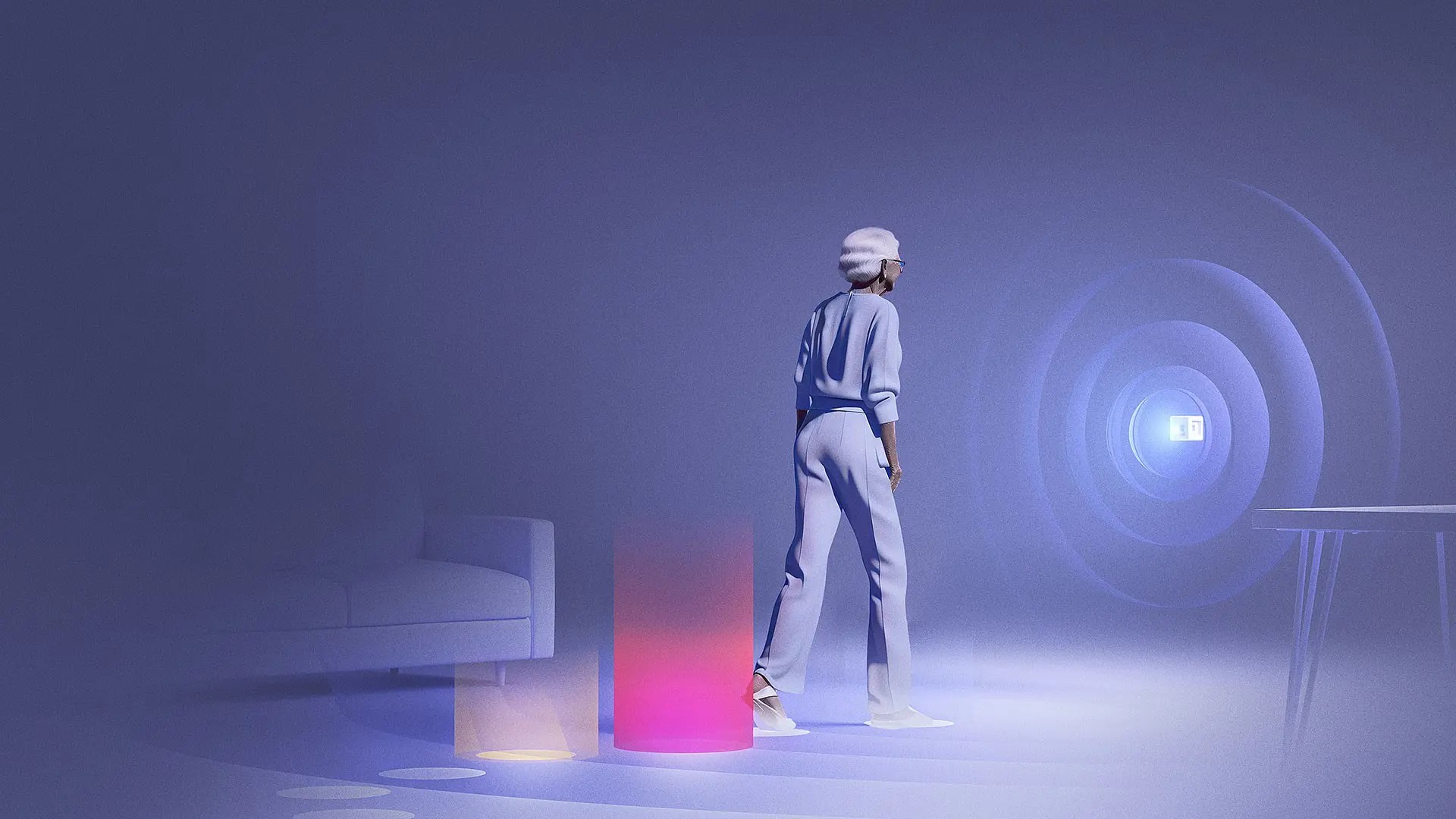
The opportunity to predict falls and cognitive diseases such as Alzheimer's and Parkinson's are increasing. With the help of a radar sensor, people's walking patterns can be read and fall accidents and diseases can be predicted. The sensor can be attached to furniture, walls, and ceilings, in the home and in healthcare. The method has been developed by researchers at Chalmers and can be used soon.
Every year, around 100,000 elderly people in Sweden fall so badly that they need to seek care. Falling accidents are most common among people over the age of 65 and in worst case can lead to death.
The researcher behind the method is Doctor of Technology Xuezhi Zeng in the Biomedical Electromagnetics research group at the Department of Electrical Engineering at Chalmers.
“With the help of a millimeter wave radar, we can measure important parameters with high accuracy. What we measure is the step time – the time it takes from the first step to the next and so on. It is variation in the step time that matters. A person at risk of falling may have a large variation in step time, for example, the first step may take one second while the second step may take two seconds,” Xuezhi Zeng says.
There is a very big societal challenge with the elderly who are involved in fall accidents. Today there are products that detect when you have fallen, but then it is too late. But thanks to the millimetre wave radar, fall accidents can be prevented.
Data can be used as decision support
Through a close collaboration between partners within academia, industry and the healthcare sector, Personalised Medicine is to be implemented within Swedish healthcare. Personalized Medicine will support which treatment type a patient should receive based on evidence-based data.
“When we started researching in the area, we were aware that the millimetre wave radar can provide high resolution and should thus have great potential for measuring instantaneous gait characteristics. The data generated can help healthcare professionals perform a more reliable risk analysis and tailor interventions. Hopefully we can solve the societal challenge with this method.”
In the short term, Xuezhi Zeng hopes that the sensor can be used on elderly in their home and on larger surfaces indoors, providing medical professionals with objective and valuable data for decision support.
In addition, this method can facilitate the clinical research on the elderly and establish more evidence between step change and the development of diseases through long-term continuous monitoring. If, for example, a patient gets Parkinson's or Alzheimer's, the healthcare staff can analyse the data and see if there is any connection between the disease and various step characteristics.
The long-term vision is to contribute to AI-based prediction of falls and diseases
As a next step, Xuezhi Zeng will start a collaboration with Research Assistant Yinan Yu at the Department of Computer and Information Technology where they will use machine learning for reliable measurement of several relevant step parameters. The project is financed by Chalmers’ Area of Advance Information and Communication Technology. Another important player in the collaboration is Stefan Candefjord, Doctor at the Department of Electrical Engineering who works with digital health and is one of the main people behind the initiative "Moving healthcare home".
Read the scientific article Walking Step Monitoring with a Millimeter-Wave Radar in Real-Life Environment for Disease and Fall Prevention for the Elderly
Author: Xuezhi Zeng, Halldór Stefán Laxdal Báruson and Alexander Sundvall, Chalmers’ technical university.
For more information, contact:
Xuezhi Zeng, Doctor of Technology at the Department of Electrical Engineering, Chalmers’ Technical University
xuezhi@chalmers.se
0733 34 83 11
For more information, contact
- Researcher, Signal Processing and Biomedical Engineering, Electrical Engineering
